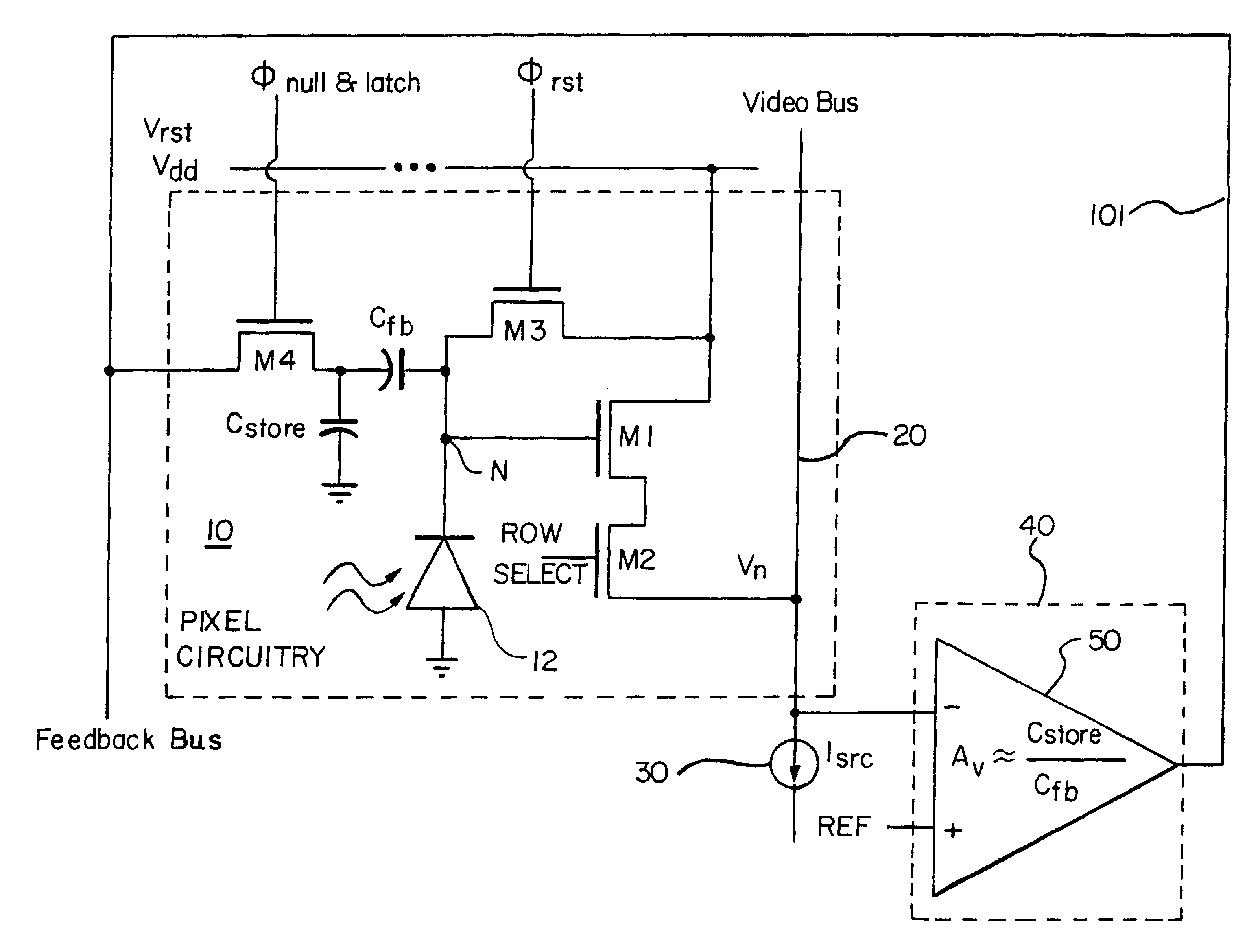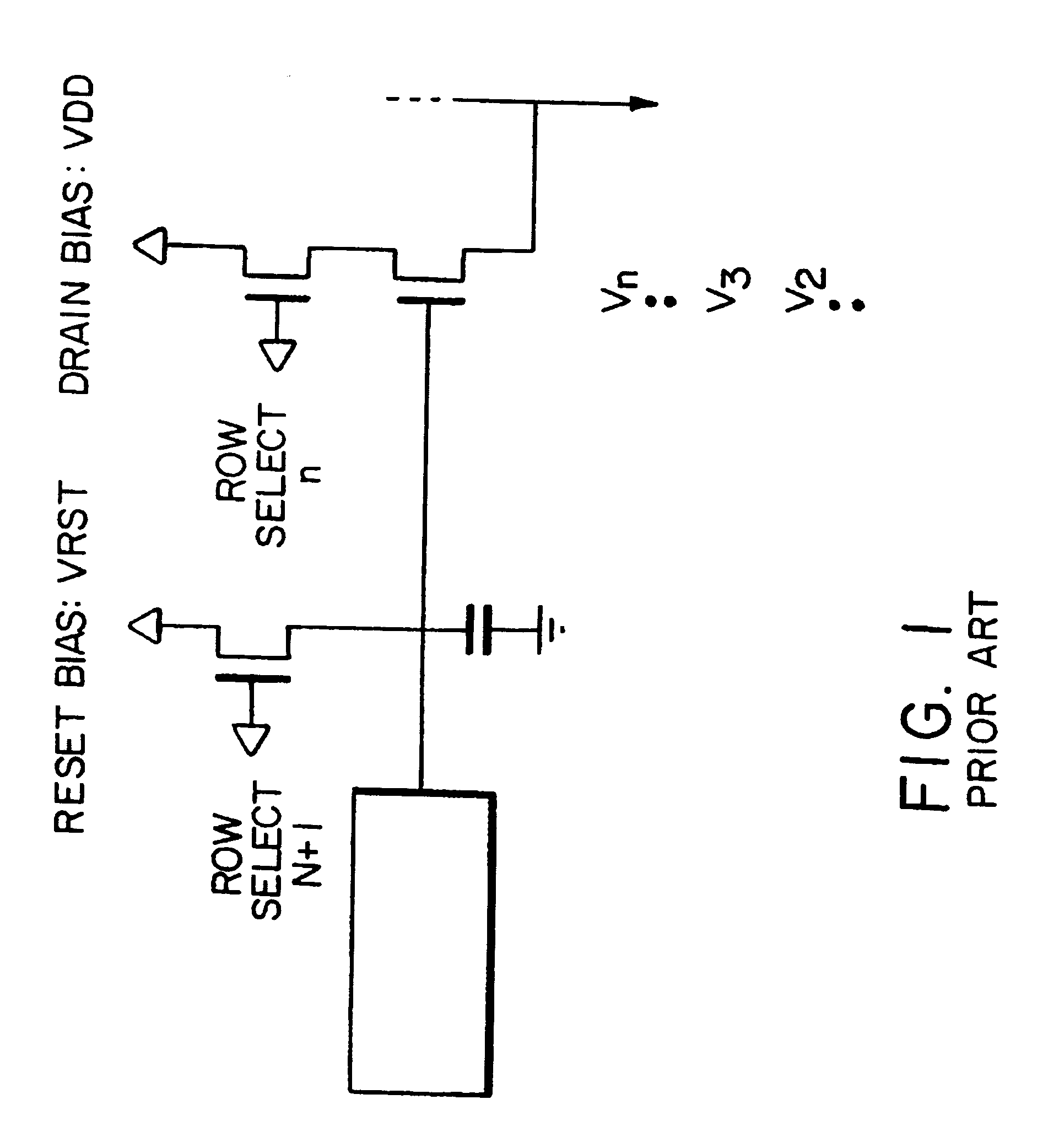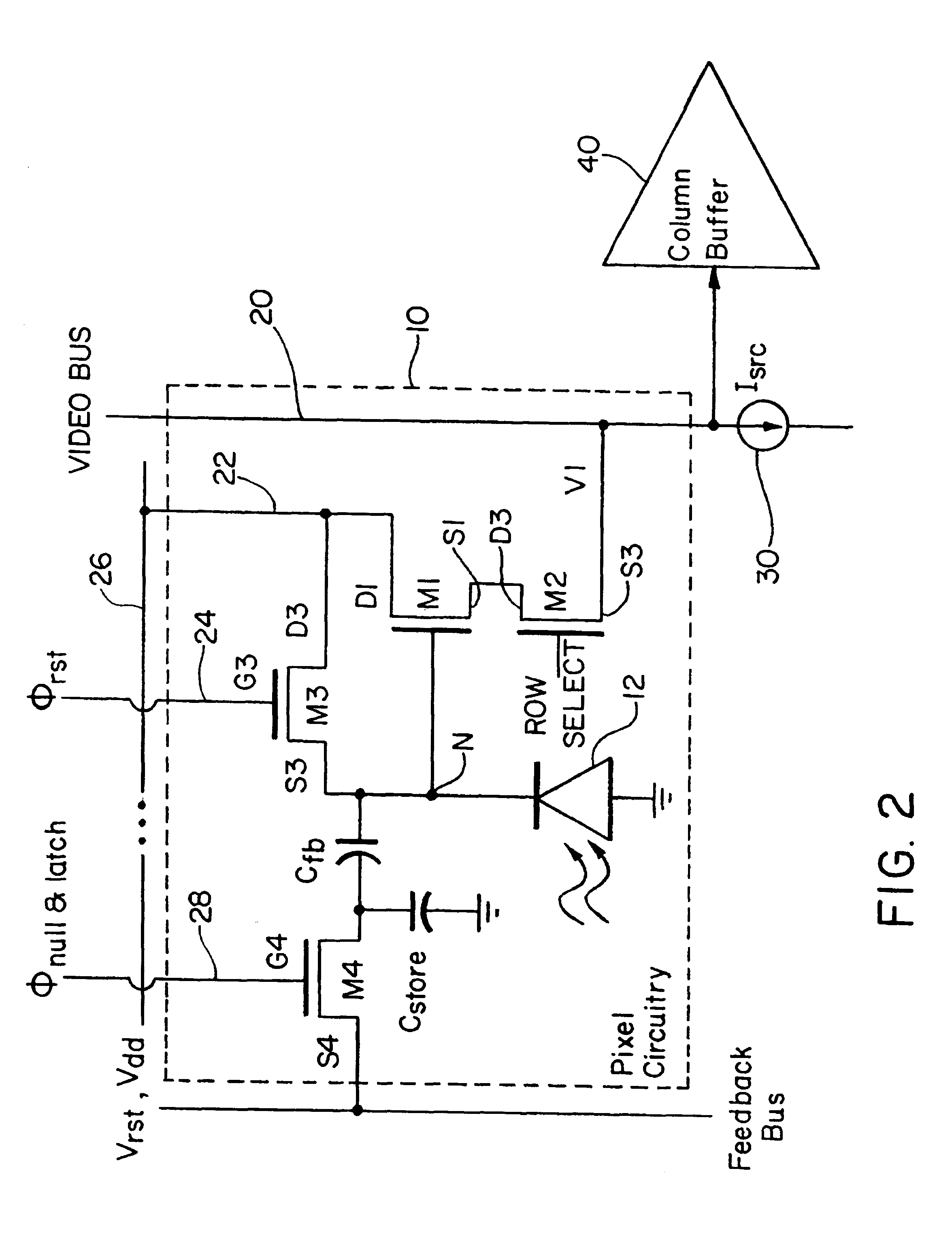Low-noise active-pixel sensor for imaging arrays with high speed row reset
a low-noise active-pixel sensor and imaging array technology, applied in the field of low-noise mos-based imagers, can solve the problems of fundamentally inferior temporal s/n performance of competing ccd imagers, imagers that are inferior to emerging charge coupled devices, and charge-amplification means that are not generally practical for on-chip implementation
- Summary
- Abstract
- Description
- Claims
- Application Information
AI Technical Summary
Benefits of technology
Problems solved by technology
Method used
Image
Examples
Embodiment Construction
The following description is provided to enable any person skilled in the art to make and use the invention and sets forth the best modes contemplated by the inventors of carrying out their invention. Various modifications, however, will remain readily apparent to those skilled in the art.
Visible imaging systems implemented in CMOS have the potential for significant reductions in cost and power requirements in components such as image sensors, drive electronics, and output signal conditioning electronics. An objective is a video camera that can be configured as a single CMOS integrated circuit supported by only an oscillator and a battery. Such a CMOS imaging system requires lower voltages and dissipates much less power than a CCD-based system. These improvements translate into smaller camera size, longer battery life, and applicability to many new products.
Because of the advantages offered by CMOS visible imagers, there have been ongoing -efforts to develop active-pixel sensor (APS...
PUM
 Login to View More
Login to View More Abstract
Description
Claims
Application Information
 Login to View More
Login to View More - R&D
- Intellectual Property
- Life Sciences
- Materials
- Tech Scout
- Unparalleled Data Quality
- Higher Quality Content
- 60% Fewer Hallucinations
Browse by: Latest US Patents, China's latest patents, Technical Efficacy Thesaurus, Application Domain, Technology Topic, Popular Technical Reports.
© 2025 PatSnap. All rights reserved.Legal|Privacy policy|Modern Slavery Act Transparency Statement|Sitemap|About US| Contact US: help@patsnap.com



